Jeff Hess talks about the history, mechanics, and evolution of wristwatches, discussing some of the major manufacturers and designers. Jeff is an online moderator on the National Association of Watch and Clock Collectors’ message board, and can be contacted via his website, Hess Fine Art.
I started with pocket watches as a child, watching old movies on television, watching the cowboys occasionally pull out an old pocket watch. I collected pocket watches until my grandfather gave me his old wristwatch when I was about 18. It was a real funny-looking, old thing, and I thought it was an interesting design, a little bit different. I wore it and was surprised at the amount of comments that I got from people. So that was my first bit of interest.
I really got hit hard in my late 20s and early 30s with the beautiful designs of the Hamilton Electric. It’s a watch that was way ahead of its time in design. It had unusual shapes and color and just really outrageous designs.
About 20 years ago, there were a couple of guys in New York City that were writing a book about Hamilton Electric. I was already kind of an expert on Hamilton Electric, so they asked me for my help, and I told them that I was going to find out who designed those Hamilton Electrics because no one knew. I started calling former employees of Hamilton because in the late 1980s, there were a lot of former employees still living. One guy led to another who led to another, and finally one guy said, “Oh, yes, those were designed by old Richard Arbib.” And the name came forward – Richard Arbib.
I asked if he was still living, and they said, “Oh, I’m sure he’s long gone,” but not wanting to give up, I got back on the telephone. I started in Pennsylvania where Hamilton was, calling all around the towns, looking for Richard Arbib. I found nothing, and finally I thought I may be on the wrong track and should start with big cities. I called New York City information, and sure enough there was a Richard Arbib listed. I called him up and said, “Are you Richard Arbib that used to design for Hamilton?” and he said, “Yes, I am. I’m amazed that anybody even knows that.” I told him I wanted to interview him, and he said, “Come on up.”
So I went up to interview him in New York. He was in his late 70s or early 80s. He was wearing a bad toupee and his house was total clutter – a stack to the ceiling with drawings and memorabilia and original renderings from all the different companies that he had designed for. Being a watch nut, I asked him if I could actually purchase drawings, and he let me. I could have bought all of the engine drawings and the automobile drawings and the vacuum cleaner drawings, but I was too naïve to do that because I wasn’t really into the whole design world. I was into watches.
I bought all of the watch renderings that he had, and 20 years later his stuff is included in museums around the world. Had I known then, of course, I would have bought every single one that he had, but that really ramped up my collecting of anything that connected with Hamilton Electric, especially those unusual designs that were designed by Richard Arbib. So that’s the crux of my wristwatch collection right now – Hamilton Electric ephemera, renderings, drawings, and the Hamilton Electric watches themselves. They also made a pocket watch or two, but they’re quite rare.
I also collect Ball watches. Ball was located in Cleveland, Ohio. He took other people’s movements and completely manufactured them from scratch. I have an early wristwatch that he designed in 1918 that had radium on the dial to make it easy to see. It was a very unusual watch, one of the first wristwatches. Wristwatches didn’t start getting popular until the 1915, 1918 era during World War I.
Later on, his sons and grandsons had a store in Cleveland that had a myriad of watches that they designed. They were rather unusual, and most had Swiss movements. They were allowed on the railroads in 1959, before any other wristwatches. Railroad men always wanted wristwatches in the 1950s, but the powers said that the wristwatches were too small and they did not keep good enough time to be allowed as a true railroad watch. Finally Webb C. Ball’s family made the first watch to be of official railroad standard.
They had to prove that their watch could keep time within certain tolerances, and they had to lobby the railroads. They had to do a lot of politicking. It was a little easier at that point because the men didn’t want to carry around these big, old, heavy pocket watches anymore. I have a nice collection of railroad Ball watches as well as Ball dress watches, which are usually rectangular and round with unusual dials. They were predominant in the 1940s through the 1950s.
Collectors Weekly: When did Hamilton start? Were they always Hamilton Electric?
Hess: No. Hamiltons were just plain, old wristwatches. They have a fantastic reputation in the world of watches. Hamilton is sometimes referred to as the Patek Philippe of America. Patek Philippe is one of the finest watches in the world. Hamilton made terrific watches, wonderful manual-wind watches. In about 1953 or ’54, they decided to attempt to start manufacturing an electric watch.
Hamilton wanted to be the first, and it was the first, but it was not a good time keeper. For the most part, most Hamilton Electrics didn’t work very well, but it still sold well because of the incredible, unusual designs of Arbib.
Collectors Weekly: How did wristwatches start out?
Hess: The first wristwatches were just pocket watches or ladies’ pendant watches with wire lugs attached to it. The wire lugs were soldered onto the edge of the old ladies’ pocket watch.
Everyone talks about who invented the wristwatch. Cartier is often credited with the first wristwatch, the Tank Watch, and Girard Perregaux claims on their website that they were the first to do it.
What we do know is that a lot of World War I veterans went to France from America and noticed that the Frenchmen were wearing women’s pendant watches strapped to their wrist. Then the military started using wristwatches. In the 1930s, watches were made to go around the leg. These old leg watches have huge bands. Everybody always says, “Man, that guy has big wrists,” but he was wearing it on his leg.
I think the heyday for writstwatches would probably be the 1930s. It was really a huge craze in the late 1920s and early ‘30s – they were pretty unstoppable. There were a lot of wonderful Art Deco watches being made.
Hamilton made a lot of fantastic watches during that time. They embraced wristwatches. The Waltham Watch Company in America lagged behind because they weren’t such great believers in wristwatches, and ultimately they went out of business. The best watches were Hamilton for quality and Elgin was the most prolific. Of course, Rolex, Cartier, and Patek Philippe were making extraordinary wristwatches during that time period as well. Those were the five biggest players.
Collectors Weekly: Was manufacture of wristwatches primarily concentrated in specific regions?
Hess: In the U.S., it was all over the country. Elgin was located in Elgin, Illinois. Hamilton was located in Lancaster, Pennsylvania. It was a countrywide craze – in fact, it was a real craze all over the world.
“Rolex made watches that kept excellent time but weren’t particularly good looking.”
Probably one of the most prolific makers of wristwatches in the world was Blancpain. A woman named Betty Fiechter was the secretary of Blancpain Watch Company, and she took over and decided she was going to concentrate on making all ladies’ watch movements for export into America. She made them for just about all the big companies. Quite often on a great brand name like Omega, if you look inside, the movement will actually be signed Blancpain or Rayville, which was another one of the names of her company. They made millions of movements over the years, and eventually the company was bought by Omega.
I love that story so much that my wife and I traveled to Switzerland and went to the little town called Villeret where the factory was located. We found the original sign on the side of the original factory, and we bought it from the current owner and had it shipped back to America.
Collectors Weekly: How did companies like Hamilton and Elgin and Omega become the big names in American wristwatches?
Hess: Through advertising and good products. Elgin wasn’t spectacular like Hamilton, but it was a fine watch. It kept good time and they cranked them out. They made more than 30 million watches over the years – probably close to 60 million – and they were in existence for about a hundred years. Hamilton was not as prolific, but they made a much better watch. Hamilton’s pocket and wristwatches probably total less than 10 million.
What makes one watch finer than another watch is the movement. Hamilton made these fantastic movements that had raised gold jewel cups. They were often high-jeweled, with 19 and 21 jewels. Elgin made a lot of 15-jewel and 17-jewel watches as well. The more jewels you have in a watch, the more likely it is to not wear out.
To purists, the movement means a lot. However, the movement doesn’t mean as much in wristwatches as it does pocket watches because wristwatches have traditionally been more about style than about the movement. But a real purist would like to have both a good movement and a good design.
What’s considered good design depends on what period you’re collecting. Early 1900 stuff was very clean. Generally they were very plain, round watches with just a little pocket watch movement. Later on, they got into the Art Deco stuff – long, rectangular watches of the 1930s. Collectors from the 1960s quite often like the more complicated watches. And if you’re strictly into timekeeping, you look for wristwatches that have a chronometer certificate or that were made for the railroad, like Ball.
The companies that strived for both design and the most accurate movement are the companies that remain strong today. Patek Philippe is a good point. Patek Philippe made watches that were extraordinarily good looking and kept extraordinarily good time.
Rolex took a different track. It made watches that kept excellent time but weren’t particularly good looking. But because they were waterproof and indestructible, they remain very strong today. So it depends. But with wristwatches, design was much more important than timekeeping ability, at least in the beginning.
I collect Hamiltons and railroad watches. There were other companies that later made railroad watches. Elgin made one. I primarily collect Ball railroad wristwatches. I also collect early Illinois watches because they’re few and far between also. Illinois made some unusual designs in the 1920s.
I also collect modern watches. I collect watches made in the 1990s and 2000s. I do this because I wear them. To this day, wristwatches are accessories. No one really needs a wristwatch. Everybody has a cell phone. For women, wristwatches have always been an accessory, but for men, a wristwatch is often the only fashion accessory they are allowed by society to wear. Earrings and necklaces and things like that are often frowned on in the workplace, but you can always change your mood or your style or whatever by just simply strapping on a different wristwatch.
My favorites are probably my Glashutte Original that was made in 1999, my 1950s Breitling, and my Ball watch, which was made about 1980.
Collectors Weekly: How did the accuracy of the wristwatch evolve over time?
Hess: I think that it probably started out with the race to get a watch on the railroad. There were a lot of companies in the 1930s and ‘40s that had fine watches that were accurate. Rolex is one of the forerunners in having an accurate watch in Switzerland. But in America, the race was on in the ‘50s to develop a watch that would be accurate enough to work on the railroad. That was a huge thing at the time.
The railroads were the number one form of transportation, and if watches were off by a few seconds, there’d be a bad train wreck, so it was important to have a watch that kept good time. When all the men wanted wristwatches, the race was on to make an accurate wristwatch. That was huge thing in the 1950s. Finally they were able to convince the powers that be that the watches were in fact good enough to be on the railroad, and then it happened in quick succession. It was Ball first, Accutron second, Elgin third.
Ball was the first watch to be allowed on the railroad. It was made in America, but it used a Swiss movement. Accutron was primarily Swiss, so Elgin was the first 100 percent American-made watch used on the railroad. Right after those three came Hamilton and a whole host of other watches. The big rush to get a watch that was accurate enough for the railroad was a good advertising ploy, too, because it would say, “Hey, we’re accurate enough to be on the railroad!”
Then quartz watches came along. Quartz watches are more accurate than mechanical watches, but hardly anybody collects quartz watches. Whether it’s Vacheron Constantin or Patek Philippe, almost none of the real good watch companies use quartz movements. They may make a couple of lines in quartz or they may make some ladies’ watches in quartz, but primarily they’re automatic.
Even though the automatic watches are not as accurate, men prefer to have an engine on their wrist. They prefer to have a watch that is mechanical. I think it’s the same reason that a man doesn’t want an automatic transmission in his Porsche. A racecar doesn’t have an automatic transmission, and I think it’s the same kind of mentality. Men want to see the gears. They want to see the jewels. They want to see the movement.
But scientists prefer quartz. I was invited to an Astronaut Hall of Fame dinner once and I couldn’t wait to find out what watches they wore. I was thinking they would wear Omega or Rolex. It turned out that most of them wore quartz watches, because to a scientist who goes into space, accuracy is everything. Quartz watches are definitely more accurate but not nearly as popular, not even close. There’s probably a hundred fine watches made for every one in quartz.
Also, most watches since the 1960s have had a calendar (day and date) feature. There are very complicated watches that have perpetual calendars that even account for a leap year. They did that with gears and now with quartz; it’s quite fantastic.
Collectors Weekly: Were wristwatches always expensive or did something change that made them pricier?
Hess: Yes, there was a change. The Swiss took over the market and they could pretty much do whatever they wanted. At one time, the Swiss made a lot of very cheap wristwatches that they imported to the USA, and that ruined the American watch market. But now the Swiss control the market and they make extremely fine wristwatches. It’s not cheap to make these fine watches. A very fine watch in the 1950s would cost $395. Today a fine watch costs $10,000 or more.
Collectors Weekly: How do people tend to collect wristwatches?
Hess: Some people collect by the maker, some collect by style. Some people want watches that keep very good time.
An entry-level collector could get together a fantastic collection of early watches for next to nothing. You could certainly go to the National Association of Watch and Clock Collectors meetings and gather up a tremendous collection of watches for very little money. Also, the last 10 years or so has been wonderful for collectors with eBay because you could just sit in your home and make a huge collection for yourself.
I go to NAWCC shows, flea markets and auctions as well – almost everybody does – but it’s so easy to find watches online now. A lot of the guys who are collectors eventually start selling off some of their watches, and when they do, they usually set up a webpage.
The digital age has also helped the research aspect of it. The NAWCC.org site has been a tremendous boon with the research of old watches. It helps all of us determine the validity of watches, how many were made, etc.
Supply and demand determines rarity of a wristwatch. In other words, say Rolex made a watch that was unpopular and they only made it for three years. Thirty years later, that watch is extremely sought after. It was unpopular in the 1950s so they didn’t make very many, and that makes it very popular today. Interesting, isn’t it?
Collectors Weekly: Do wristwatch collectors also collect clocks and other timepieces?
Hess: Generally speaking, a watch guy isn’t a clock guy. Pocket watch guys may have a small wristwatch collection and wristwatch guys may have a small pocket watch collection, but generally they tend to stay away from clocks.
Collectors Weekly: If somebody was new to collecting wristwatches, what kind of advice would you have for them?
Hess: Start small, but buy the best you can. Buy one expensive watch rather than multiple cheap watches because in the long run you’ll be happier and the value of your collection is more likely to increase with the more expensive watches.
I wrote a book called The Best of Time about Rolex, and that’s a good book. Everybody says it’s the bible of Rolex. Then, of course, there’s Guide to Watches by Cooksey Sugar, and then I would just use the Internet. The Internet is chock full of information.
(All images in this article courtesy Jeff Hess)





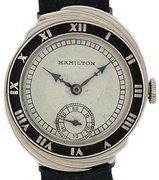
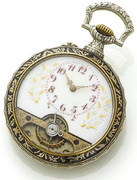 Jonathan Snellenburg Ticks off the History of Watches and Clocks
Jonathan Snellenburg Ticks off the History of Watches and Clocks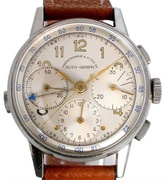
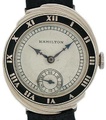 Don Levison on Cartier Tanks, Rolex Oysters, and Hamilton Venturas
Don Levison on Cartier Tanks, Rolex Oysters, and Hamilton Venturas Jonathan Snellenburg Ticks off the History of Watches and Clocks
Jonathan Snellenburg Ticks off the History of Watches and Clocks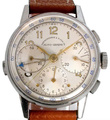 Chronograph Collector Jeff Stein: An Interview with Collectors Weekly
Chronograph Collector Jeff Stein: An Interview with Collectors Weekly WristwatchesNo one really needs a wristwatch anymore. With smartphones in our pockets a…
WristwatchesNo one really needs a wristwatch anymore. With smartphones in our pockets a… Mari Tepper: Laying it on the Line
Mari Tepper: Laying it on the Line Nice Ice: Valerie Hammond on the Genteel Charm of Vintage Canadian Costume Jewelry
Nice Ice: Valerie Hammond on the Genteel Charm of Vintage Canadian Costume Jewelry How Jim Heimann Got Crazy for California Architecture
How Jim Heimann Got Crazy for California Architecture Modernist Man: Jock Peters May Be the Most Influential Architect You've Never Heard Of
Modernist Man: Jock Peters May Be the Most Influential Architect You've Never Heard Of Meet Cute: Were Kokeshi Dolls the Models for Hello Kitty, Pokemon, and Be@rbrick?
Meet Cute: Were Kokeshi Dolls the Models for Hello Kitty, Pokemon, and Be@rbrick? When the King of Comedy Posters Set His Surreal Sights on the World of Rock 'n' Roll
When the King of Comedy Posters Set His Surreal Sights on the World of Rock 'n' Roll How One Artist Makes New Art From Old Coloring Books and Found Photos
How One Artist Makes New Art From Old Coloring Books and Found Photos Say Cheese! How Bad Photography Has Changed Our Definition of Good Pictures
Say Cheese! How Bad Photography Has Changed Our Definition of Good Pictures Middle Earthenware: One Family's Quest to Reclaim Its Place in British Pottery History
Middle Earthenware: One Family's Quest to Reclaim Its Place in British Pottery History Fancy Fowl: How an Evil Sea Captain and a Beloved Queen Made the World Crave KFC
Fancy Fowl: How an Evil Sea Captain and a Beloved Queen Made the World Crave KFC
Great article Jeff. Then again, you are always an interesting read!
Kim Gerard
NAWCC Member #0169537
Betty Fiechter was my great aunt…an amazing woman! Blancpain left our family name quite some time ago but thanks to Betty I wear one of the signature bullets everyday.
Another great article from my second uncle or cousin — we haven’t figured it out yet. What do you think of the newer watch companies like Sothis, who are making some unusual watches? Thanks,
Bob Hess
Portland, Oregon
My mother brough a wrist watch for my father while he was in Italy during WWII, it has 24 rectangle diamonds and a platinum back the rest is silver. It has a sweepting second hand and the name on the face at the bottom is Kimberly. So far no one can tell me anything about it other. It is so different most people said they have never seen one so different or bestiful. It was brough in Phila Pa. around 1942 0r 1943
I have a 21 jewel Ball Railroad wristwatch. Model number 1604B. Manual wind. It needs a balance staff. I am looking to swap out the movement or replace the balance assembly. I am searching for the movement manufacturer and the movement number. I understand several manufacturers may have made it or it may have an ETA number. If I have this information I may find the equivalent replacement. Any guidance would be appreciated.
Alan
I recieved a promo for a Navy Blue Angel watch which had the 4 skyhawk diamnd formation on the second hand.It was in the 80s that I recieved the mailer. It was done by I think one of the mints like Danbury,but have been unable to find any info on this very rear watch.Looked under all the brands and mints but no luck. Do you know where I can look . Thanks
i found a hamilton watch at a local thrift store in town it is 14k stamped on the back i have had it for over 6 months not knowing what to do with it it is still working and looks old . it had a old band on it and 1 prong is bent slightly but is beautiful crystal is not crack and i thin mother of pearl is the face of the watch. it is also stamped hamilton on the back of the 14k gold back it says automatic in the watch i dont know where to go with this please help thanks
I have a wristwatch that I bought at an auction & can not find info. on it.I was wondering if you could help.The watch is an old windup that has the words “True Grit” on the face,on the back & on the buckle of the leather band.Its in average shape.I have goggled & tried to find info. in lots of place with out any success.All help would be appricated.Thanks Reuben
I have an Elgin “radium dial” wrist watch that was a gift to me in 1959. It has a white face with the name Elgin Sportsman on the face. The second hand is in a seperate dial at the 6 o’clock position. I remember the hands and numbers would glow in the dark when it was new but they’ve faded away in the last 52 years. I was told the paint used on the hands and numbers was radioactive which accounted for the glow but I’m sceptical about that. I’ve never seen another watch like this one,ever! Can anyone give me any factual information about this watch?
i have an elgin fnd 01 012 gold watch with a noon diamond and cant find any info so can you tell me where to begin my research it was my dads and just courious thats all the watch keeps good time thanks
Im surprised he didnt mention Southbend. Ive had many watches wrist & otherwise, & the only 1 that has kept exact time over the past 20 years { without any repairs or cleaning} is the Studebaker. underrated excellence.
when my dad died in 1958 he was wearing a Detroit red wings wrist watch it has been stored all these years. i can’t find any information on this watch. it has red numbers for the time and a red circle around the face and it say red wings in red on the face with a red and white wing on the face, black or brown leather wrist strap, around the face is metal with the numbers 10,20,30,40,50 and at the top is a a triangle shape pointing down and is has a small dot in the center of the triangle, the back is still shiny and has NHL in the center of the back.nothing is broken on the watch and everything is original. the leather strap is all there or complete. the watch looks aged and a bit tarnished. can you tell me what year it was made and its possible value. also another watch of my dads says milan on the face and back, it say water resistant on the face and also 100 f t on the face. it has a calander on the face that shows the date (day only) there are no numbers on the face just gold colored little lines and gold hands , the little lines and hands are a very shiny gold, they look new and it has a black leather strap that is broken near where the holes were and the buckle is broken off. it also says bezel on the back with MLN789 and pc 32 and what looks like 098 or 096, watch looks aged but barely tarnished, can u tell me when or what year this was made and does it have any value?
Jeff,
You asked somewhere what the swiss code HOX meant. I had a watch marked Tiffany on the dial ans HOX on the movement. It was a Patek Philippe watch. Sherry Earhardt had never heard of that. There is an old code book that helped identify the manufacturer. We have met and I have a copy of the Rolex book you coauthored.
Bud Presgrove
P.S. I found today that TZY is Tiffany.
About 25 years ago I purchased a solid gold Baume Mercier wristwatch at Disney World Florida. The face of the watch has Mickey Mouse on it and I was told this collection was limited to 99 (mine is 16). I have never been able to find any more information since then, any ideas?
Thanks
Russ
I have a PRONTO, antimagnetic hermetic shock-resist screw back windup watch. Stainless steel 17 jewel. Luminous hands, circular light green color center that stops just under the numbers, cream color outer band and black, block style hour numbers within the band. Also along the very outer edge within the cream color, are the numbers and marks for the seconds. Under the numbers, along and within the outer edge of the green inner center, are military hour numbers. It has a sweep second hand. Under the 6 at the outer edge is the word SWISS. On the back, at the wind knob, is stamped the number 61105. Are you able to tell me where the watch originated fromand if it is or was military issue. Thanks in advance, Warren.
Great information
Want to know if my Elgin wrist watch is slightly water proof? Numbers on the back are FGC8030 138 TY2807. AUTO MOVT.